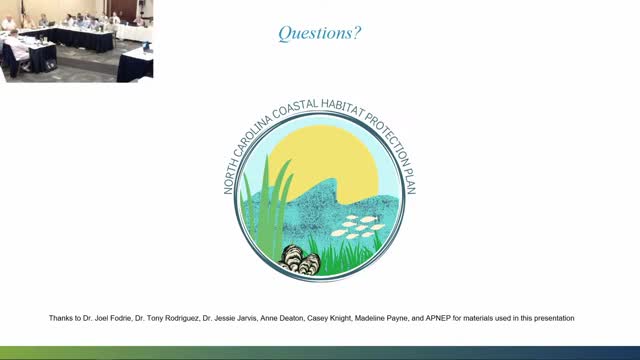Raw sewage crisis threatens local waterways and marine life
August 23, 2024 | Marine Fisheries, State Departments and Agencies, Organizations, Executive, North Carolina
This article was created by AI summarizing key points discussed. AI makes mistakes, so for full details and context, please refer to the video of the full meeting. Please report any errors so we can fix them. Report an error »

In a recent government meeting, significant concerns were raised regarding the alarming levels of raw sewage being dumped into local creeks, with one county reportedly releasing 30,000 gallons and another 100,000 gallons during a recent rain event. This environmental crisis has led to severe degradation of seagrass habitats, crucial for local fisheries and marine ecosystems.
A local waterman highlighted the impact of these sewage discharges, noting that while recreational and commercial fishermen are often blamed for damaging seagrass, the real culprits are the sewage pumping stations that release untreated waste when water levels rise. He emphasized that the ongoing pollution is detrimental to the health of the creeks and the surrounding environment, urging for accountability and action to address the issue.
The discussion also touched on the changing dynamics of seagrass species in the region. An official confirmed that long-term surveys indicate a shift from eelgrass to shoalgrass, attributed to rising water temperatures. This transition raises concerns about the ecological balance and the implications for fish populations that rely on these habitats. The official noted that while eelgrass is struggling, shoalgrass appears to be thriving, leading to a mixed composition in many areas.
As the meeting concluded, participants expressed the need for more rigorous monitoring and proactive measures to protect these vital ecosystems from pollution and climate change impacts. The discussions underscored the urgency of addressing both sewage management and habitat conservation to ensure the sustainability of local fisheries and marine life.
A local waterman highlighted the impact of these sewage discharges, noting that while recreational and commercial fishermen are often blamed for damaging seagrass, the real culprits are the sewage pumping stations that release untreated waste when water levels rise. He emphasized that the ongoing pollution is detrimental to the health of the creeks and the surrounding environment, urging for accountability and action to address the issue.
The discussion also touched on the changing dynamics of seagrass species in the region. An official confirmed that long-term surveys indicate a shift from eelgrass to shoalgrass, attributed to rising water temperatures. This transition raises concerns about the ecological balance and the implications for fish populations that rely on these habitats. The official noted that while eelgrass is struggling, shoalgrass appears to be thriving, leading to a mixed composition in many areas.
As the meeting concluded, participants expressed the need for more rigorous monitoring and proactive measures to protect these vital ecosystems from pollution and climate change impacts. The discussions underscored the urgency of addressing both sewage management and habitat conservation to ensure the sustainability of local fisheries and marine life.
View full meeting
This article is based on a recent meeting—watch the full video and explore the complete transcript for deeper insights into the discussion.
View full meeting
